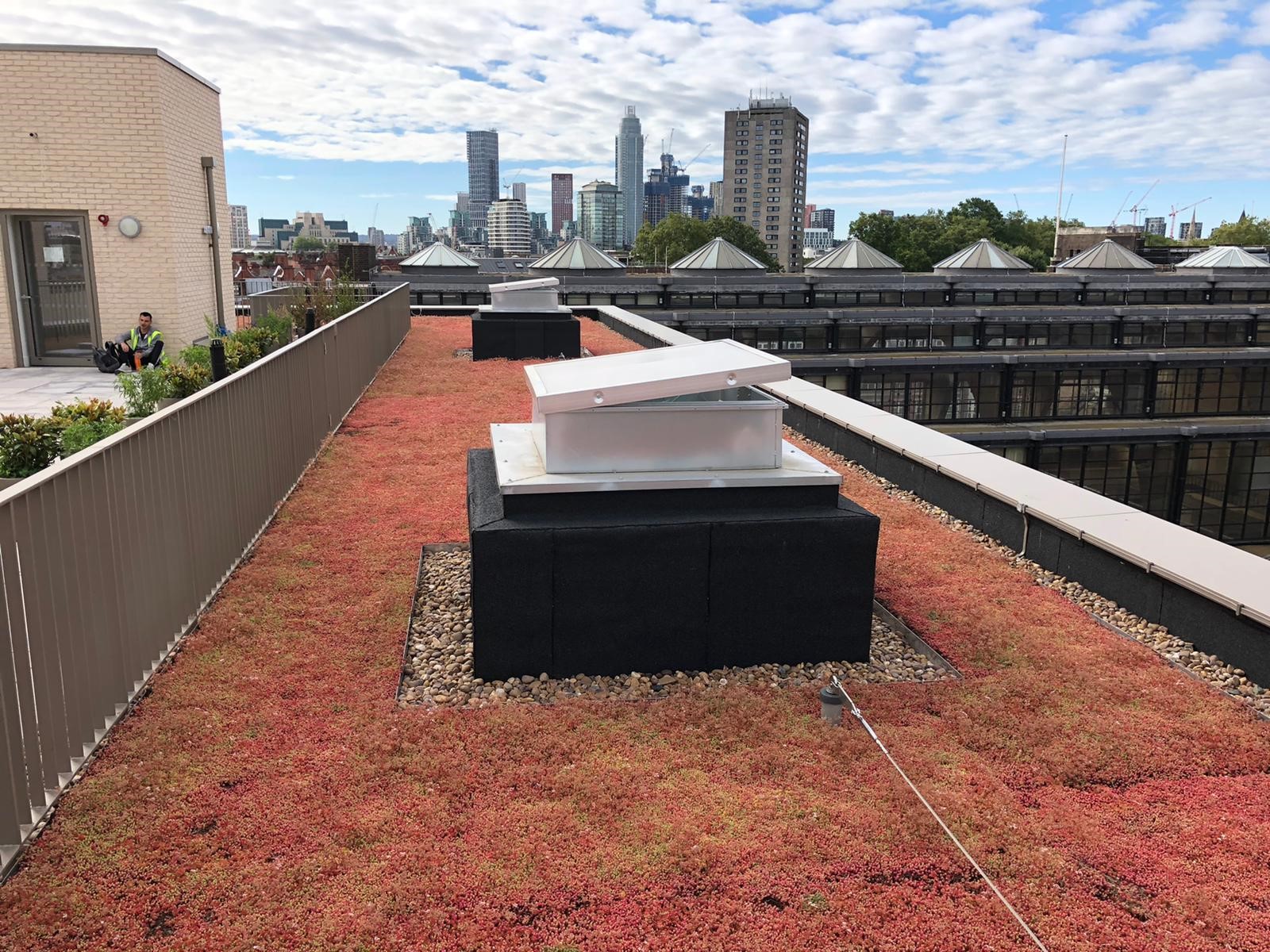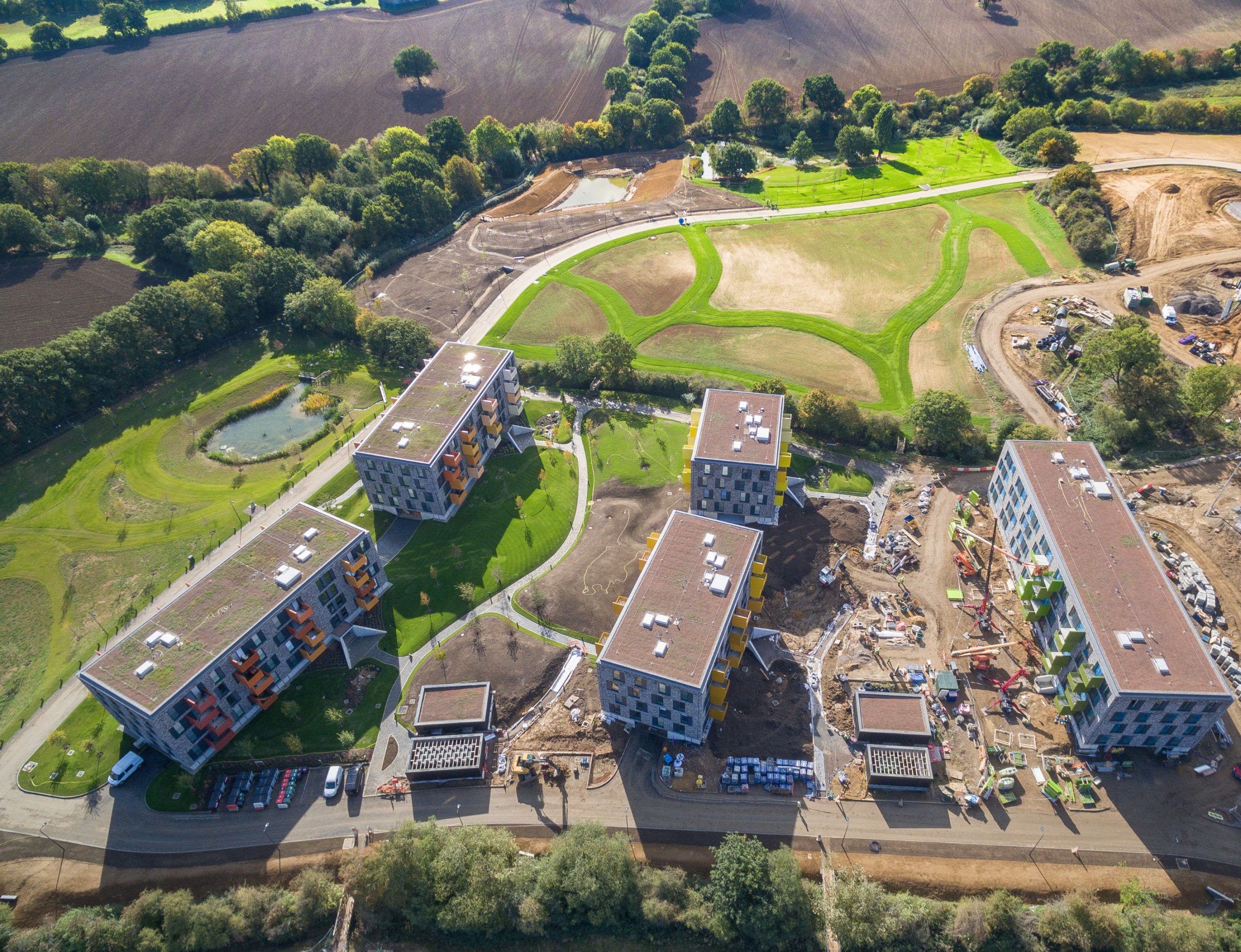
With the UK now frequently experiencing record volumes of rainfall and increasing risks of flooding, building design must be more ecologically and sustainably driven to counteract climatic challenges. Keith Hills, Managing Director at EGR (Eco Green Roofs Ltd) explains how living roof systems can offer a proven solution to managing rainwater drainage in city spaces.
Living or green roof systems have been growing more common as planners and architects look to maximise green spaces in urban areas to meet local environmental action plans. This includes building envelope designs that incorporate increased biodiversity through the creation of new habitats for wildlife. However, green roofs can also play a vital role in managing the impacts of extreme weather and mitigating flooding.
Global environmental change is already impacting the climate of the UK in clear and measurable ways with drier summers and wetter, milder winters. Met Office figures show that since 1998, we have experienced six of the ten wettest years on record. February 2020 saw more than twice the average rainfall for the month – making it the wettest February ever recorded – and capped off the 5th wettest and mildest winter since records began in 1862. According to analysis by the Tyndall Centre for Climate Change Research at the University of East Anglia, UK rainfall will continue to increase in intensity in the coming years as the climate continues to warm.
Therefore, it is now more important than ever that the way our buildings, towns and cities are designed and constructed accounts for these climatic challenges and contributes to minimising the impact. In any area where development has taken place, including some more rural settings, one of the most common contributors to flooding is the presence of hard, impermeable surfaces. Instead of draining away slowly, the rainwater quickly runs off these surfaces and can overwhelm both drainage systems and watercourses leading to flooding. A report for the Committee on Climate Change (CCC) estimated that flooding causes around £1.1bn of damage each year in the UK, just one factor in how flooding can impact people’s lives. Implementing approaches to mitigate flooding aligns with the aim stated in the RIBA Sustainable Outcomes Guide of balancing social, environmental and economic value to deliver a triple bottom line of sustainability.
Sustainable Drainage Systems (SuDS) are key to counteracting the effects of the urban environment and as such, are now a key part of planning policy. The Flood and Water Management Act 2010 requires developments to utilise elements of a SuDS approach to reduce the flood risk, and the current version of the London Plan specifies that new developments should aim to achieve greenfield run-off rates.
Green roofs have an important role to play in helping to achieve this by intercepting rainfall, providing opportunities for evapotranspiration from the vegetation and the storing of rainwater. These green roof systems can fulfil many of the key aims of the SuDS approach as it helps to manage the water as close as possible to where it falls, reduces the quantity and speed of runoff to prevent flooding and can also act as a filter to limit the pollution present in runoff.

Green roofs can also form part of meeting the RIBA Sustainable Outcomes, drawn from the 17 UN Sustainable Development Goals. In particular the systems have a role in the creation of a Sustainable Water Cycle and Sustainable Land Use & Ecology objectives.
The performance and capacity of the green roof in managing rainwater will depend on a number of factors. These include the type and design of the system, the depth of the substrate, the type of vegetation and the level of moisture already in the soil. The Greater London Authority’s Living Roofs and Walls Report (2019) cites several studies that demonstrate the effectiveness of different roof types. Research carried out in Germany found that extensive green roofs with between 60mm and 100mm of soil can intercept 50% of annual rainfall and intensive roofs with deeper substrates (around 500mm) can intercept up to 90% of the rainfall. Furthermore, a study in the United States found that a green roof with a substrate depth of 89mm delayed the start of roof run-off by 5.7 hours and the peak run-off by 2 hours.
Finally, with so many factors to consider, it is important that the right approach is adopted to ensure the system supports the planning and design objectives. Therefore, engaging with the right specialist partner who can provide technical advice and guidance on a full range of systems is essential. The chosen supplier should also comply with best practice schemes such as the Green Roof Organisation (GRO) Code of Practice and FLL guidance as due to the living components, expertise in design, installation and maintenance is crucial to the success and longevity of the roof.
In addition, a blue roof is a system engineered to store rainwater and release it in a controlled way to limit the impact of heavy rain. This can be a standalone system or be integrated with a green roof element where the rainwater store can irrigate the vegetation.
Green roofs are important to the future of our villages, towns and cities, not only as a way of creating much needed green spaces for both people and wildlife but in helping to mitigate the impacts of climate change. In the words of RIBA president, Alan Jones: “We must re‑construct our profession as the leaders of sustainable design teams if we are to combat climate change and meet the UK climate targets and our ethical responsibilities”. Working with an experienced and specialist supplier will help ensure that the value added by the living roof system can be maximised.
To discuss an upcoming project, contact the EGR team at info@egr.co.uk or to read more about its full service offering including green, blue and solar roof solutions and case study examples, visit www.egr.co.uk.
